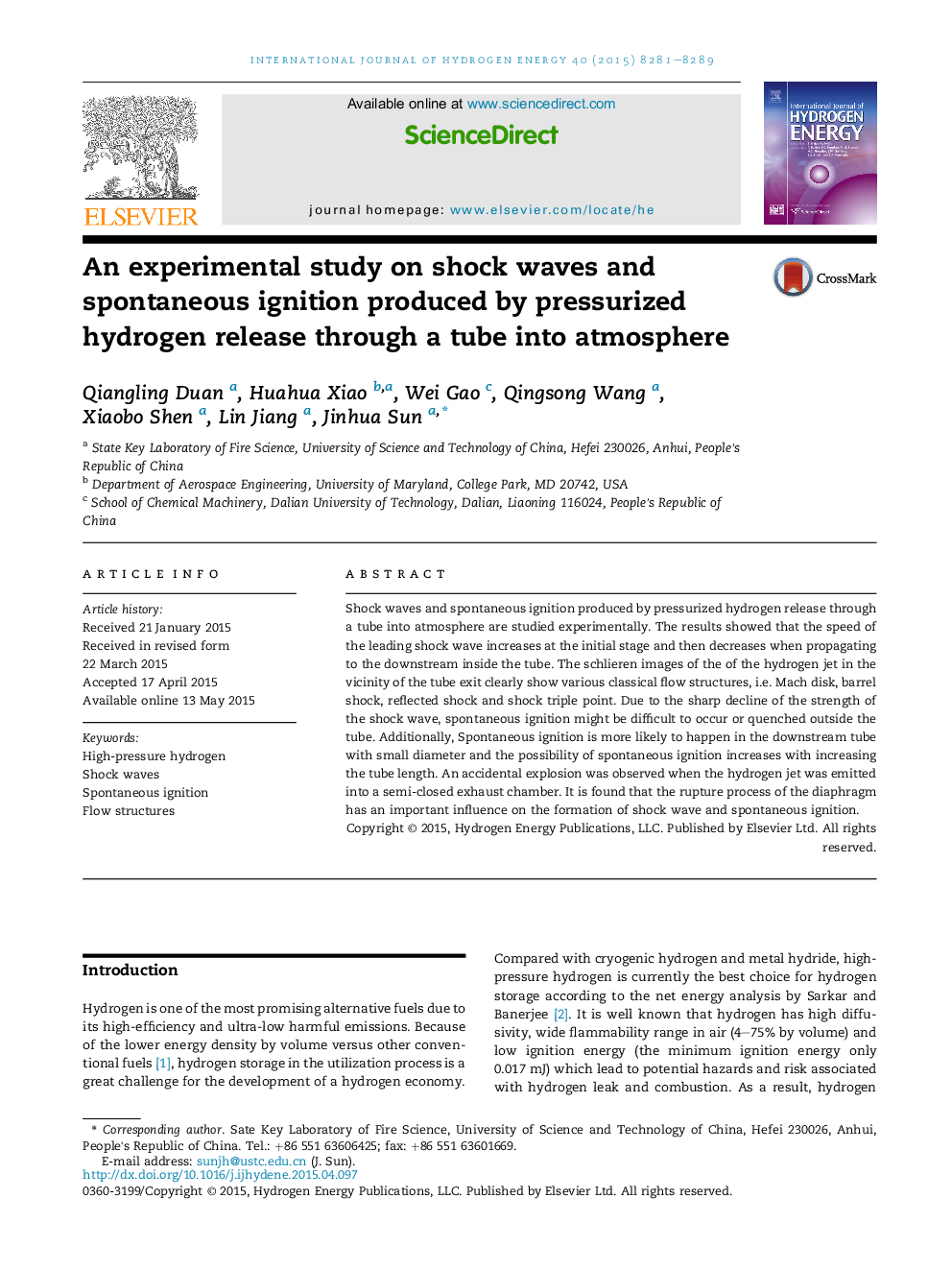| Article ID | Journal | Published Year | Pages | File Type |
|---|---|---|---|---|
| 1270821 | International Journal of Hydrogen Energy | 2015 | 9 Pages |
•The shock speed increased first and then decreased with propagating in the tube.•The flow structure of the hydrogen jet at the tube exit was clearly distinguished.•Spontaneous ignition is more likely to occur in the small diameter and long tube.•The rupture process of the diaphragm had a vital effect on spontaneous ignition.
Shock waves and spontaneous ignition produced by pressurized hydrogen release through a tube into atmosphere are studied experimentally. The results showed that the speed of the leading shock wave increases at the initial stage and then decreases when propagating to the downstream inside the tube. The schlieren images of the of the hydrogen jet in the vicinity of the tube exit clearly show various classical flow structures, i.e. Mach disk, barrel shock, reflected shock and shock triple point. Due to the sharp decline of the strength of the shock wave, spontaneous ignition might be difficult to occur or quenched outside the tube. Additionally, Spontaneous ignition is more likely to happen in the downstream tube with small diameter and the possibility of spontaneous ignition increases with increasing the tube length. An accidental explosion was observed when the hydrogen jet was emitted into a semi-closed exhaust chamber. It is found that the rupture process of the diaphragm has an important influence on the formation of shock wave and spontaneous ignition.
